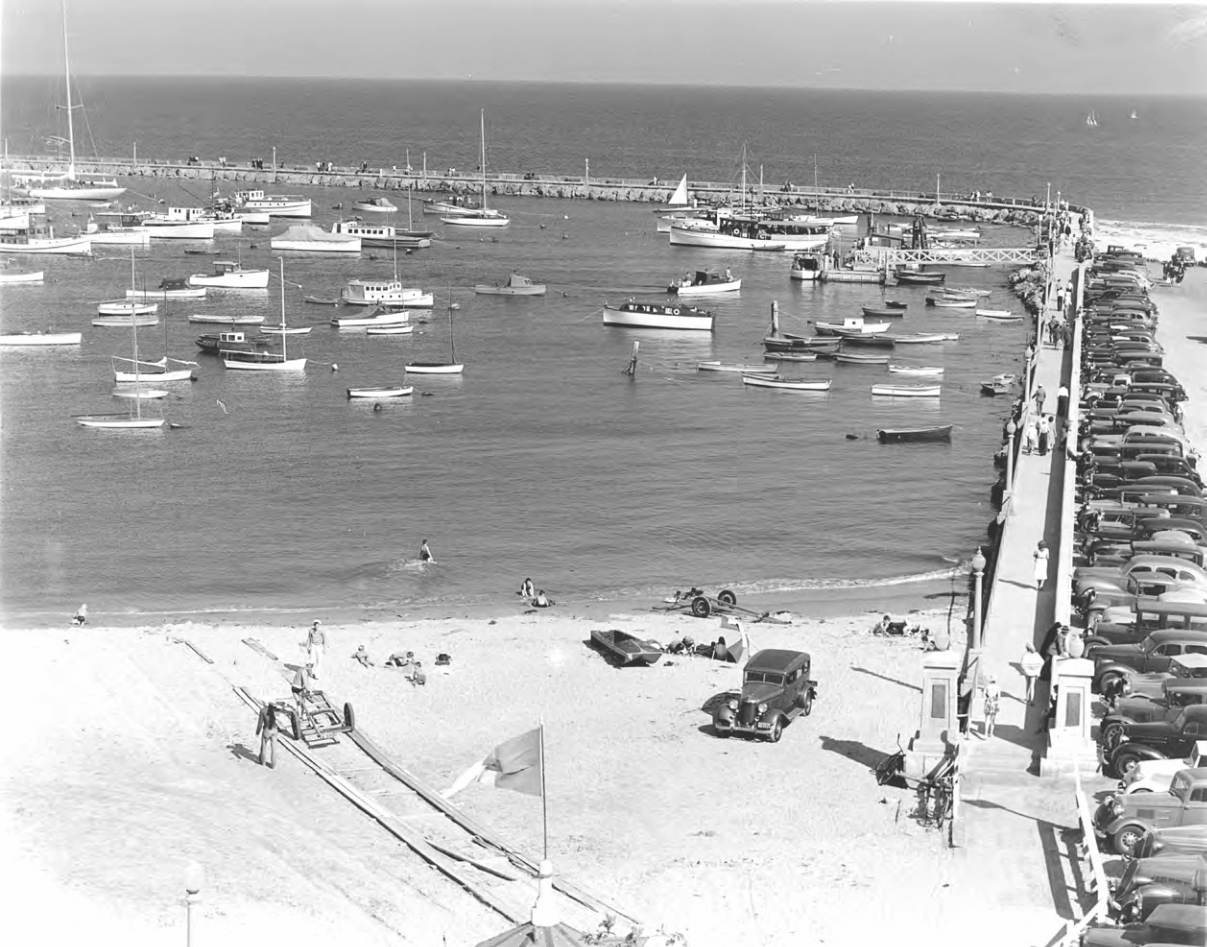Basic HTML Version



62
winter
|
spr ing
Viewed here from West Beach circa 1928 with Castle Rock on the left, the breakwater
took nearly 5 years to complete
(Courtesy Santa Barbara Historical Museum)
make Santa Barbara a force in the world of polo. Unfortunately for him, a
bad fall caused injuries that forced him to give up playing the sport.
In 1935, Fleischmann, to avoid California State income tax, changed
his official residence to Nevada, buying land and building a house called
Uppaway
at Glenbrook on a hill overlooking Lake Tahoe. In 1940 he
In the 1930s the new yacht harbor created an idyllic sanctuary for pleasure boats
(Courtesy Santa Barbara Historical Museum)
Edgewood and Serena
Over the years, Fleischmann would add 131 acres to his original
purchase in Carpinteria and
Edgewood
would acquire a five-car garage
and several cottages for employees. To rival his contemporaries, he built a
conservatory that housed one of the largest organs ever made. Edwin Storr,
son of Fleischmann’s valet, remembers that Sarah Fleischmann referred to
the Conservatory as the playhouse and that it had a secret, hidden bar. A
dummy electric switch plate rotated to one side to reveal a lock into which
a key could be inserted. The key caused a large section of wall to move
revealing the bar. There was also a small shooting range on the estate and a
pet cemetery.
Storr also remembered that African artifacts were displayed on the patio
walls and lush flower gardens covered the spacious grounds. Fleischmann
even kept a herd of wild deer in a six-acre corral. He had a practice polo
field on the estate, which later became a lemon orchard.
Inside, the stuffed heads of game festooned the trophy room where an
elephant’s foot served as trashcan and a tiger’s skin as table cover. Each year
at Christmas time, Max and Sarah Fleischmann sat in chairs flanking the
fireplace and passed out gifts to the servants and their children while the
trophy heads looked on.
In addition to
Edgewood
, the Fleischmanns owned a beach cottage at
Serena, a fishing lodge on the Klamath River, and the Olivos Adobe in
Ventura, which he saved from destruction and used as a duck hunting
lodge.
Polo having brought him to Santa Barbara in the first place,
Fleischmann was determined to add his name to the growing number of
polo fields in Santa Barbara. He purchased land near Serena and began
construction on his own field. He then acquired two partially completed
polo fields that adjoined his and soon Fleischmann Polo Fields helped
become popular, and that hydroplaning and general air flying will be
amusements which find ready aid and encouragement.”
Those expecting to benefit from Fleischmann’s largess, however,
would have to wait a bit longer. In 1920, he abandoned plans to develop
Bingham’s lot and purchased an additional 7 acres on Lambert Road in
Carpinteria. He hired Los Angeles architects Johnson, Kaufmann, and
Coates to design a modest H-shaped, tile-roofed villa that he named
Edgewood
for the stands of trees that bordered the property.
While Max was building his house, Julius continued tending and
increasing the family fortune until his death in 1925 forced Max to
become head of the company. Max did not want to leave Santa Barbara,
however, so the company sent his brother’s executive secretary, Julius
Bergen, to live at
Edgewood
. Despite this assistance, the day-to-day
running of the business didn’t agree with Max, so a merger was arranged
in 1929 by J.P. Morgan & Co. and Fleischmann Yeast Company became
part of Standard Brands. The family retained a significant interest, and
Max was a director until 1942. Max, however, was again free to pursue his
varied interests.

